第50章 MONEY OR SIMPLE CIRCULATION(31)
[17.]In the following passage Xenophon discusses money and hoard,two specific and distinct aspects of money:"Of all operations with which I am acquainted,this is the only one in which no sort of jealousy is felt at a further development of the industry ...the larger the quantity of ore discovered and the greater the amount of silver extracted,the greater the number of persons ready to engage in the operation....No one when he has got sufficient furniture for his house dreams of making further purchases on this head,but of silver no one ever yet possessed so much that he was forced to cry 'Enough'.On the contrary,if ever anybody does become possessed of an immoderate amount he finds as much pleasure in digging a hole in the ground and hoarding it as an actual employment of it....When a state is prosperous there is nothing which people so much desire as silver.The men want money to expend on beautiful armour and fine horses,and houses and sumptuous paraphernalia of all sorts.The women betake themselves to expensive apparel and ornaments of gold.Or when states are sick,either through barrenness of corn and other fruits,or through war,the demand for current coin is even more imperative (whilst the ground lies unproductive),to pay for necessaries or military aid."(Xenophon De Vectigalibus ,C.IV [transl.by H.G.Dakyns,London,1892,Vol.II,pp.33i-36].)In Ch.9,Book I of his Politics ,Aristotle sets forth the two circuits of circulation C --M --C and M --C --M,which he calls "economics"and "Chrematistics",and their differences.The two forms are contrasted with each other by the Greek tragedians,especially Euripides.
Means of Payment Karl Marx's A CONTRIBUTION TO THE CRITIQUE OF POLITICAL ECONOMYb.Means of Payment Up to now two forms of money which differ from the medium of circulation have been considered,namely suspended coin and hoard.The first form,the temporary transformation of coins into money,reflects the fact that in a certain sphere of circulation,the second term of C--M --C,that is M --C the purchase,must break up into a series of successive purchases.Hoarding,however,is either simply due to the separation of the transaction C --M which does not proceed to M --C,or it is merely an independent development of the first metamorphosis of commodities,money,or the alienated form of existence of all commodities as distinct from means of circulation,which represents the always saleable form of the commodity.Coin held in reserve and hoards constitute money only as non-means of circulation,and are non-means of circulation merely because they do not circulate.The distinctive form of money which we now consider circulates or enters circulation,but does not function as means of circulation.Money as means of circulation was always means of purchase,but now it does not serve in that capacity.
When as a result of hoarding money becomes the embodiment of abstract social wealth and the material representative of physical wealth,this aspect of money acquires specific functions within the process of circulation.
When money circulates simply as a means of circulation and hence as a means of purchase,this presupposes that commodity and money confront each other simultaneously;in other words,that the same value is available twice,as a commodity in the hands of the seller at one pole,and as money in the hands of the buyer at the other pole.The simultaneous existence of the two equivalents at opposite poles and their simultaneous change of place,or their mutual alienation,presupposes in its turn that seller and buyer enter into relation with each other only as owners of actually existing commodities.But the metamorphosis of commodities,in the course of which the various distinct forms of money are evolved,transforms the commodity-owners as well,and alters the social role they play in relation to one another.In the course of the metamorphosis of commodities the keeper of commodities changes his skin as often as the commodity undergoes a change or as money appears in a new form.Commodity-owners thus faced each other originally simply as commodity-owners;then one of them became a seller,the other a buyer;then each became alternately buyer and seller;then they became hoarders and finally rich men.Commodity-owners emerging from the process of circulation are accordingly different from those entering the process.The different forms which money assumes in the process of circulation are in fact only crystallisations of the transformation of commodities,a transformation which is in its turn only the objective expression of the changing social relations in which commodity-owners conduct their exchange.New relations of intercourse arise in the process of circulation,and commodity-owners,who represent these changed relations,acquire new economic characteristics.In the same way as within the sphere of internal circulation money becomes nominal,and a mere piece of paper representing gold is able to function as money,so a buyer or seller who comes forward as a mere representative of money or commodities,namely one who represents future money or future commodities,is enabled by the same process to operate as a real buyer or seller.